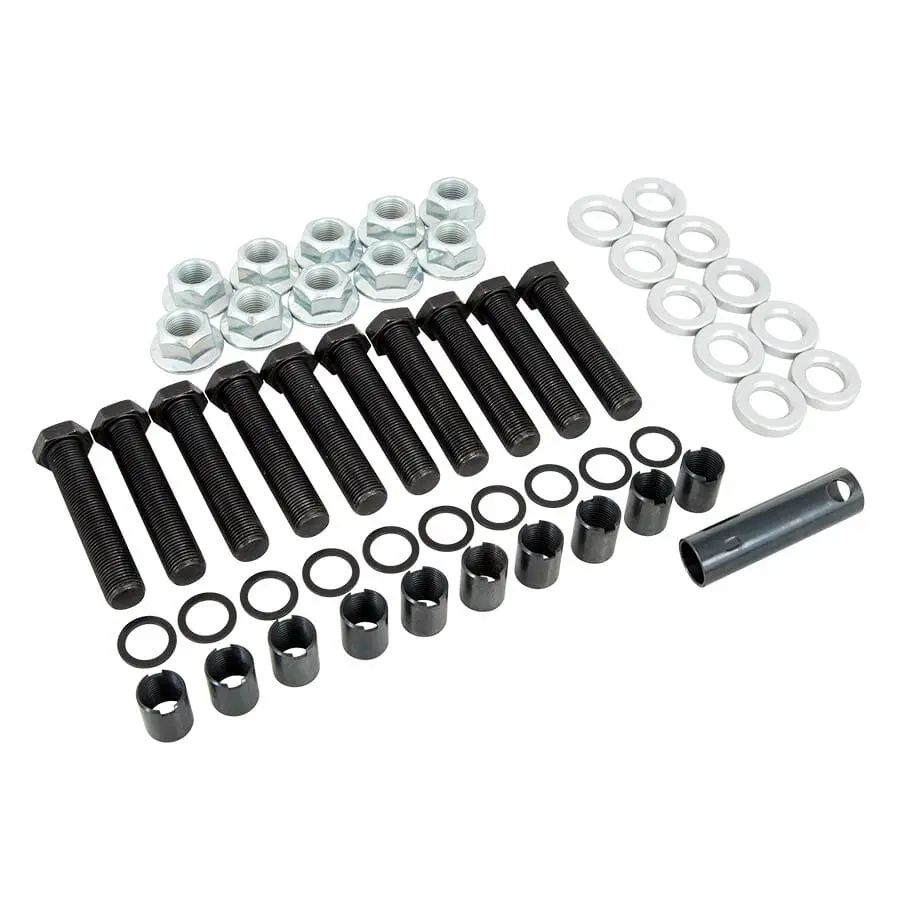Conical legs nuts leave alot of the wheel stud completely unsupported and the wheel basically floats on the wheel studs. Shank lug nuts go all the way thru the rim and ALMOST bottom out on the axle flange,this makes the moment of action on the stud just off the face of the axle flange. Also the od of the shanks are same as the Id of the wheel holes so the wheel doesn't float on the studs.
I went 1.34 60' with 1/2 strange studs no problem.
That's what makes sense & what I thought until my machine design class. I understand both ways of thinking (shear of the bolt itself vs. clamp load of the joint) but it's such a hard concept to work your brain around so it's still difficult for me to work through it. What you are describing seems right but that's not how bolts work, or at least not how they work in THIS case. It took me a few months to understand it and I can at least call it out when I see it, but it's still hard to understand for me fully.
What your described is a pin joint, think dowel pins. Wheels are a friction or slip-critical type joint. The lugs don't see any shear loading in a normal case, they only should see tension. When they get loose and see shear loads they break.
My understanding is there is a lot of designs that converged into why shank lugs exist but the shanks don't actually support the weight of the vehicle or torque of the wheel. The friction between the wheel and hub created by the clamp load of the lugs is what supports the load. Where I have mentally got to is that these two designs do the same thing, just different methods
A) Shank style lugs locate the wheel concentric to the axle rotation, think most aftermarket drag wheels, old school slot mags or the sketchy uni-lugwheels. Because these aftermarket wheel companies where cheap and tried to be universal the shank lugs allowed one wheel to fit multiple manufacturers that used different hub pilot diameters, allowed one wheel to fit different bolt patterns, allowed different lug diameters (7/16, 1/2", m12) etc. The lugs don't see any horizontal load during normal use, the only purpose of the shank is to locate the wheel & the lug torque clamps the wheel onto the hub like any other application. If you could somehow remove the sleeve/shank from the wheel after the wheel was centered & properly torqued you could drive on it, the lug shouldn't see any horizontal load.
B) Conical/acorn lugs, think everything OEM GM, the wheel pilots to a hub to make sure it's concentric, the acorn/taper just provides a small clean surface for the lug to contact.
Basically if you have a 3/8-20 lug nut & torque it to 50ftlb and a 1/2-20 or 3/4-20 all torqued to 50ftlb, it will have the same clamp load. It will be able to support the same payload or torque. The reason larger lugs are used is to be able to apply more torque & gain more clamp force. Going from M12 to 5/8 studs gains you nothing unless you torque the fasteners more.
If bolts did work as pins & not fasteners tightening the lugs more won't actually generate any more joint capacity.
I guess it's a lot of words to say that from my understanding shank lugs won't do anything to solve my problem, the reason mine bent is because the clamp load from the torque I did apply wasn't enough to resist the torque going through the joint. Even if the lugs were 1ft long as long as the fastener was sufficiently stuff & torqued properly the length of the stud extending from the hub flange to the bottom of the wheel is unimportant.
I don't have the math done to back it up but my mechanics professor would fail you if you tried using shear load of the bolt in a shear load case instead of the clamp load generated from the hardware.




